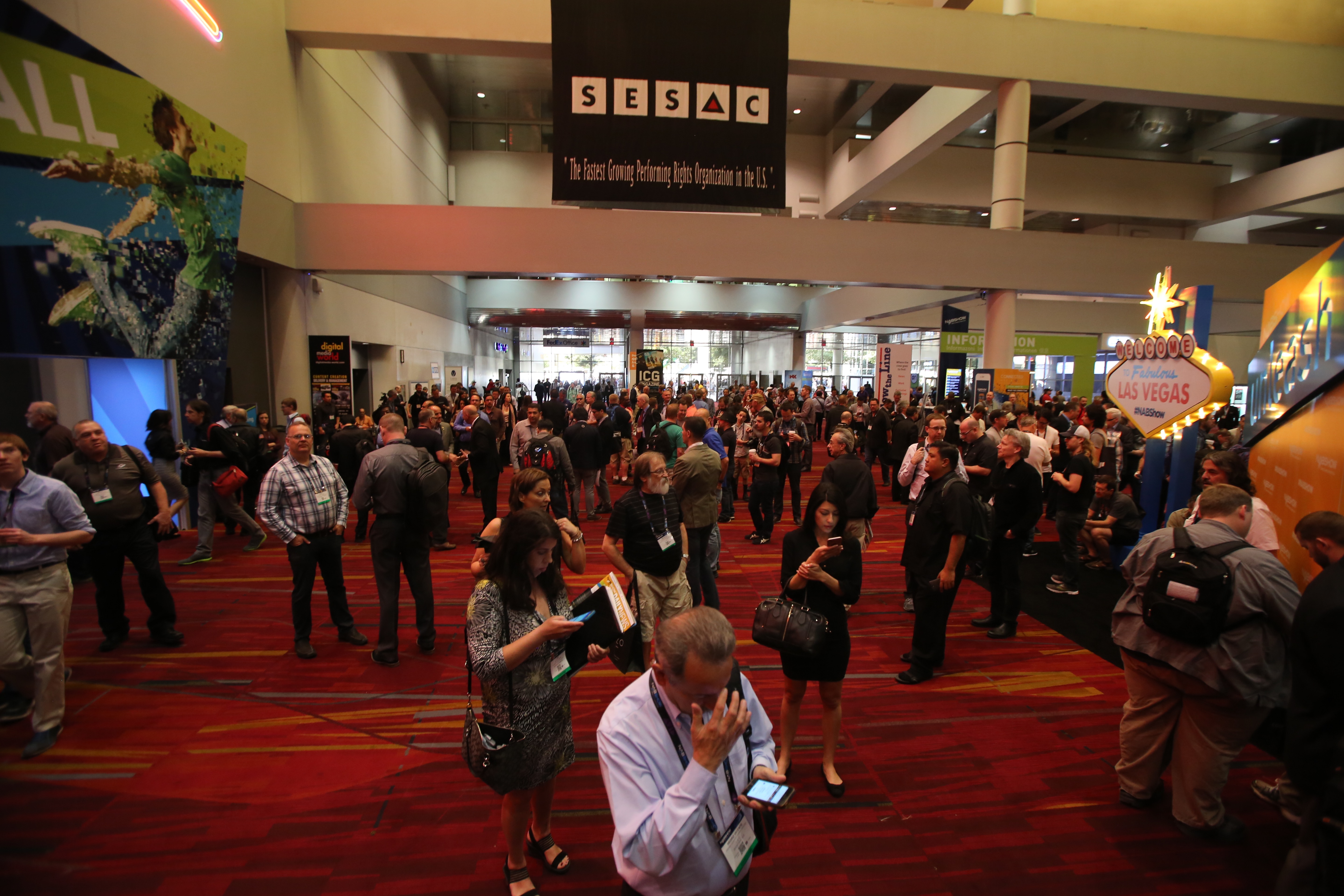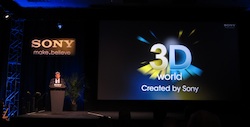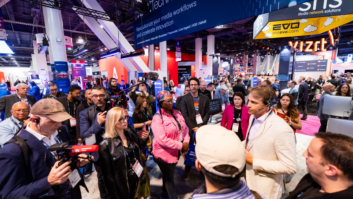
It’s the final day of NAB 2016. Over 100,000 professionals have gathered to partake in one of the biggest industry events on the calendar. TVBEurope looks at what happens in Vegas:
The Alliance for IP Media Solutions (AIMS) has made its industry show debut in Vegas. The trade alliance prepared a full schedule of events throughout the show as it looks to promote open standards and interoperability-based transition to media production over IP.
Interoperability demonstrations are featuring on a variety of members’ booths, which now spans 22 manufacturers, consultants, service providers, media content producers and distributors.
Forbidden Technologies is unveiling the Virtual Ingest Server for its Forscene professional video editing software. The solution is currently in beta and is planned for release later in 2016.
Forscene’s Virtual Ingest Server follows the recent addition of Forscene’s Edge Server to the Microsoft Azure Marketplace and provides an alternative to traditional hardware-based ingest workflows. The solution uses the same Forscene software that runs on ingest hardware, but the software runs within a virtual machine on the user’s computer or laptop instead of running on a separate ingest server.
AJA Video Systems has released a new v1.3 firmware update for its Cion 4K/2K production camera.
The camera is capable of shooting edit-ready Apple ProRes files at up to 4k 60Fps, and the firmware update, created on customer feedback, adds features to improve the imagery pipeline.
Specifically, the update is designed to improve highlight handling and black detail in every gamma mode, with new gamma naming conventions making the modes more closely aligned to industry standards.
Imagine Communications has introduced the Selenio Video Delivery Edge (VDE), a HTTP-to-User Datagram Protocol gateway designed to create the opportunity for video service providers to reduce costs and the complexity of their networks by bridging next-generation and legacy video delivery infrastructures.
Imagine claims that Selenio VDE also enables cable operators and other content distributors to improve the efficiency, performance and revenue-generating potential of video delivery and ad insertion infrastructures, while paving the way for the transition of operations to a fully virtualised environment based on generic computing and networking resources.
EVS and HBS are collaborating to create the first ever Live Sports Production module, which will become a part of HBS’ Broadcast Academy.
EVS will offer technology and 20 years of experience in the field to the Live TV Simulator – an itinerant live broadcast training tool that teaches broadcast professionals on the ground at sporting events.
The Live TV Simulator will become an integrated training facility built using live video servers that enable up to 12 ISO camera feeds for ingest/playout, instant replay and slow-mo tools.
It will also host a live video switcher that can be used by two to three trainees simultaneously.
Francis Tellier, CEO of HBS, says, “This partnership is the perfect combination of two of my passions – innovation and legacy. Since we first worked together at the 1998 FIFA World Cup, we’ve developed the most innovative broadcasts and have certainly left a legacy at every single event.”
Lawo is presenting theWall, a multi-viewer control system, which, thanks to its latest update, now has support for the Cobalt Quint-Split multi-viewer system.
The smart control system supports the Imagine Platinum SX Hybrid system and Lawo states that more multi-viewer systems are slated for support in the near future.
The company claims that theWall is the ideal solution for operators and EICs to configure monitor walls in OBs or studios.
Users can intuitively configure any monitor wall, route signals, change mosaic layouts or save and load user presets, designed to save saving hours of downtime previously required for complex configuration changes.
Moving onto audio, Calrec Audio is unveiling number of networking interfaces, including a 1U Ravenna/AES67 interface that can transport 256 channels of audio on a single connection.
Designed to interface with Calrec’s Hydra2 audio core, which serves Calrec’s Apollo, Artemis and Summa consoles, the 1U box can accept a second expansion card, which increases capacity to up to 512 channels of audio.
Dave Letson, vice president of sales at Calrec, explains: “It is imperative that Calrec supports Ravenna and AES67 as they are popular options for broadcasters seeking an AoIP solution.
“We want to support our customers’ working methods, so we have developed this solution to provide another option that can be chosen with confidence to be fully integrated with Calrec’s consoles.”
Also showcasing Ravenna and AES67 standards is Digigram, which is presenting its IP codecs, primarily highlighting the IQOYA call remote-broadcasting AoIP.
It is providing a live demonstration of audio networking interoperability that features 27 networked-audio products employing audio networking technologies such as Dante, Livewire, and Ravenna audio-over-IP protocols.
Digigram is also presenting its LX-IP PCIe sound card, which, according to the company, facilitates a smooth migration to IP while ensuring secure content delivery with the same latency as digital audio, as well as interoperability with other audio protocols.
In keeping with the audio theme, ENCO is demonstrating its visual radio solution for broadcasters. The platform uses ENCO’s DAD radio automation and presenter management interface to deliver a ‘complete multimedia experience’ to web and mobile audiences.
Visual Radio is designed to give broadcasters a comprehensive content acquisition and production system for the scheduling and delivery of synchronised video and audio, and also possesses targeted advertising support.
A Visual Radio exhibit at the ENCO booth is demonstrating how operators can create a manual or automated workflow to deliver professional video feeds. The demonstration also aims to emphasise the speed of the learning curve for live camera switching, and the display of graphical elements including lower-thirds, network bugs, social media feeds and breaking news crawls.
Sonnet Technologies has been showcasing its Fusion Thunderbolt 3 PCIe Flash Drive a pocket size SSD storage device with Thunderbolt 3 interface. It possesses 512GB of flash storage, leveraging the 40Gbps bandwidth of Thunderbolt 3 to deliver data transfer speeds up to 2,100Mbps.
“When we introduced the original Fusion PCIe Flash Drive last year, it made history as the world’s fastest bus-powered, pocketable storage device,” says Robert Farnsworth, CEO of Sonnet Technologies.
“With its blazing-fast Thunderbolt 3 interface, the Fusion Thunderbolt 3 PCIe Flash Drive can sustain the ultra-high file transfer speeds required for just about any 4K workflow – whether users need an ultra-fast shuttle drive or a take-anywhere scratch drive for editing high frame rate 4K video at offsite shoots.”





